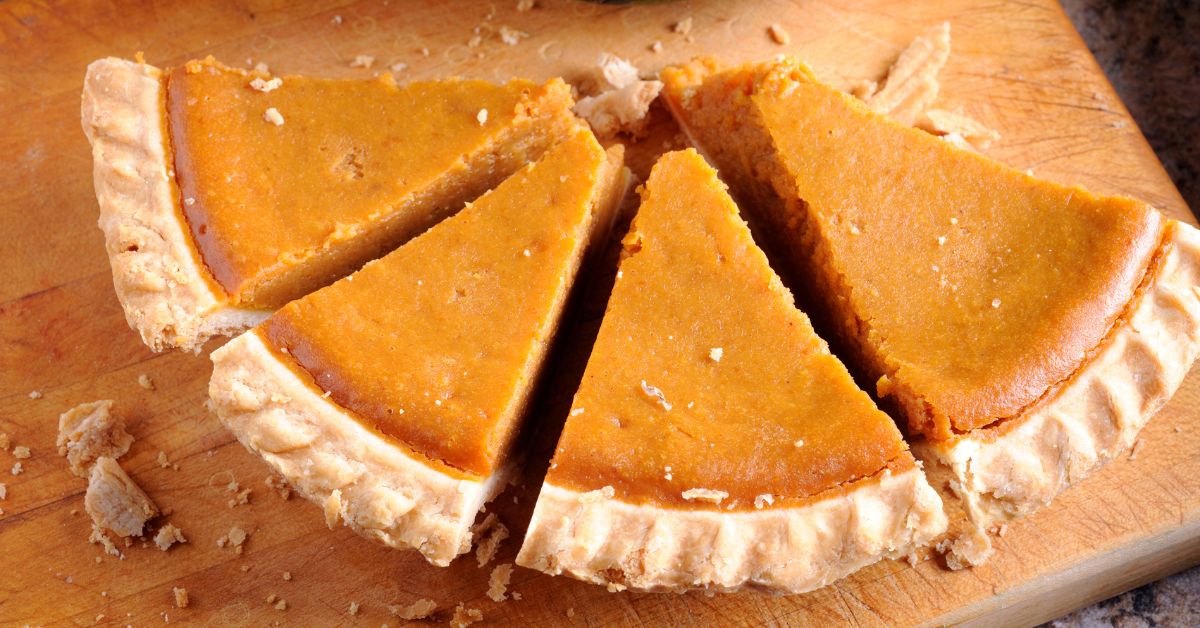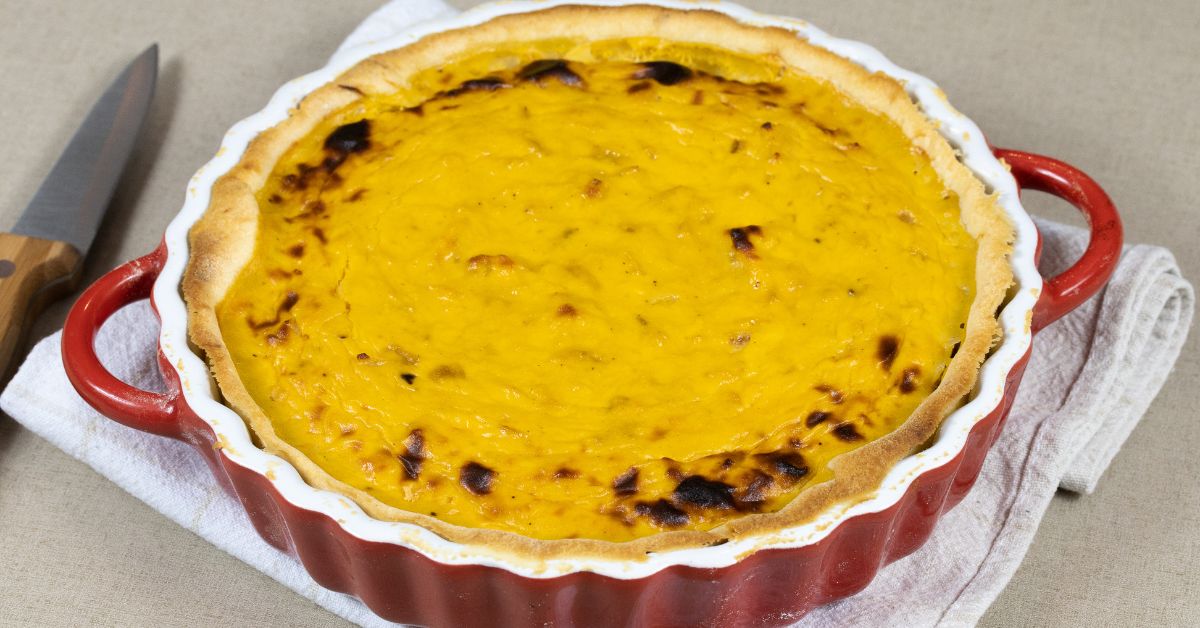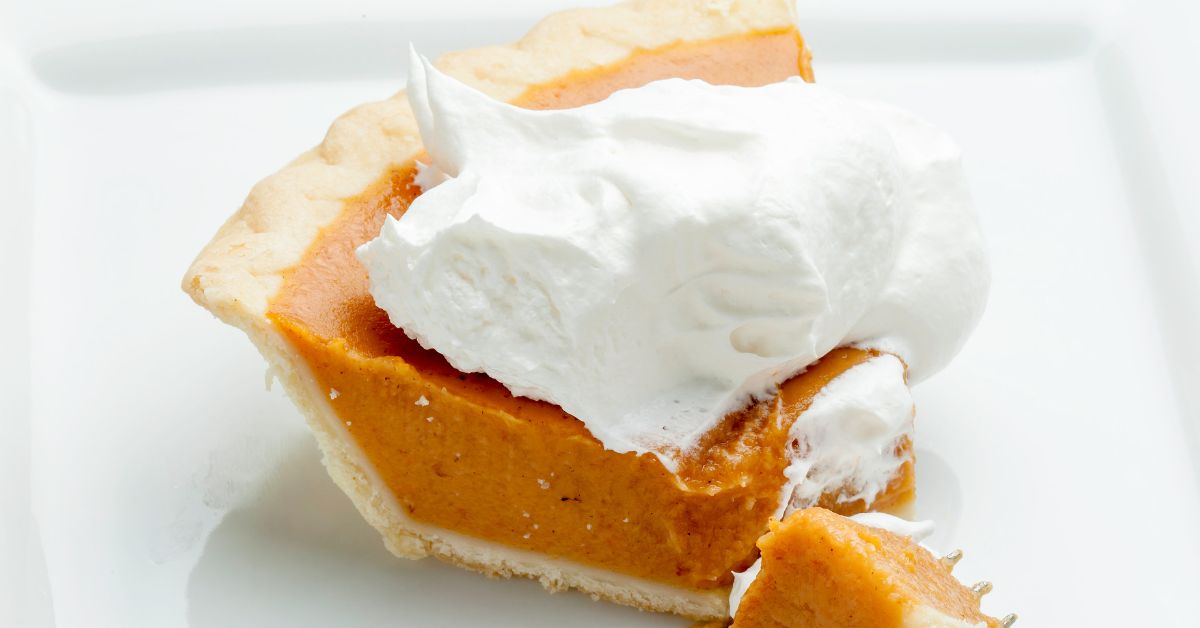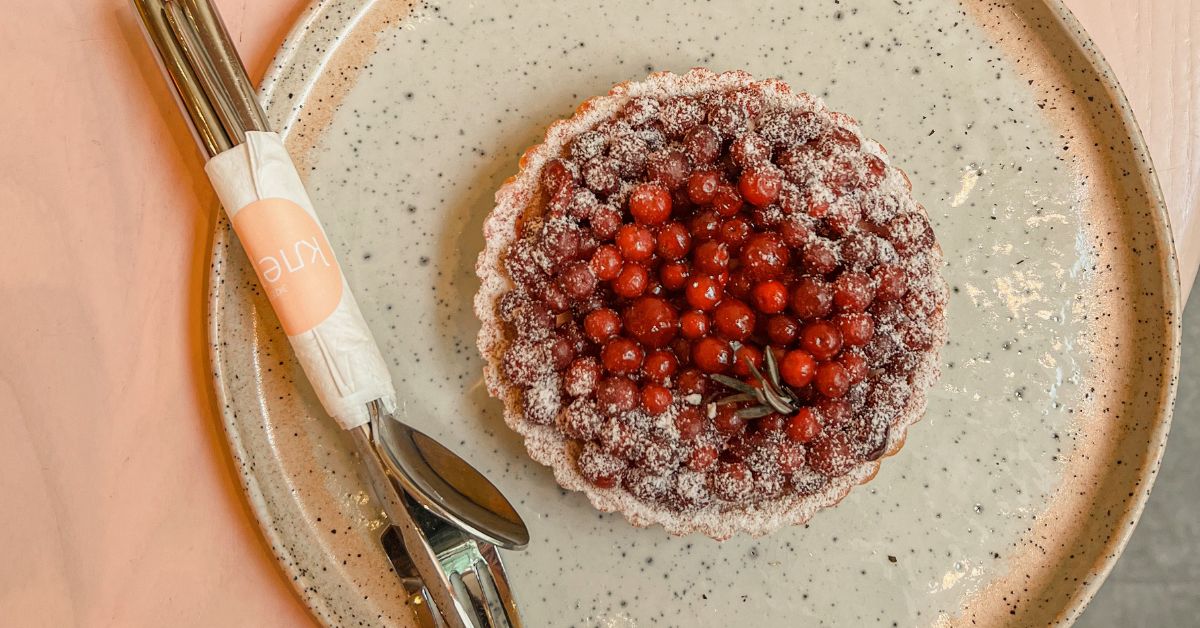How to Fix Overcooked Pumpkin Pie? Try These Simple Ideas

Pumpkin pie is a genuine delicacy and a welcomed addition to many dinner tables. It is extraordinarily simple to make and exquisitely tasty to eat; it is the signature dessert to almost every holiday dinner. Nevertheless, as simple as pumpkin pie is to make, there are still things that can go wrong, and therefore it is good to have a few tricks up your sleeve. So how to fix overcooked pumpkin pie?
Fix overcooked pumpkin pie by smearing fruit and syrup, adding whipped cream on top, adding vanilla pudding, or by placing it in the fridge under a plastic foil. Saving your overcooked pumpkin pie depends on how big the damage is.
Nothing can save a severely overcooked pumpkin pie, but if the pie is a tad burned, some things can be done to save it. Since it would be a shame to discard a fixable pumpkin pie, in the following paragraphs, I will give you some ideas on how to save your overcooked pumpkin pie.
How to Know If Pumpkin Pie Is Overcooked?
If your pumpkin pie is overcooked, there will be signs. The first signal your pumpkin pie will give you is the smell. The crust’s edges smell like typical burned bread, somewhere between sweet and smoky,
The crust is not the only thing that will smell; the pumpkin custard smells too. It releases a very sweet and gentle smell, just like when the pie is done, but stronger. The more the pie burns, the stronger the smell becomes.
Of course, if your pumpkin pie keeps overcooking, the smell will become overall unpleasant and smoky.
Another sign is the appearance of the pie. Depending on the level to which the pumpkin pie has overcooked, the top of the pie will range from dark orange to dark brown, at which point it is beyond salvation. The crust will also change in color and become darker, as well as become crunchy and will likely stick to the pan.

The texture will exhibit visible signs too. The pie will crack on the surface, and when cut, it will crumble as it will be mildly to severely dehydrated.
Can You Fix Overcooked Pumpkin Pie?
The general consensus on overcooked food, any type of food, is that it cannot be saved. If something happens to the dish, it is better to leave it undercooked than overcooked, as an undercooked dish is much more likely to save.
However, when it comes to pumpkin pie, there are things you can do to fix it if it is overcooked. Still, the degree to which the pie has been overcooked plays a massive role in its saving probability. If your pumpkin pie is severely overcooked, with dark or blackish shades on top, smelling like burnt wood and a burnt solid crust, it is best you kiss your pie goodbye, as there is nothing you can do.
On the other hand, if your pumpkin pie has been a tad dehydrated and is still at the initial stages of overcooking, you can save it by rehydrating to improve the consistency and adding new flavors to mask the burnt.
Whipped Cream
Whipped cream is always a great idea to add creaminess, sweetness, and flavor to an otherwise dry dish. Although pumpkin pie is an incredibly creamy desert, an overcooked pumpkin pie tends to be dry and crumbly.
Therefore, adding whipped cream to a slightly overcooked and a tad burnt pumpkin pie may be just the salvation the pie needs. Let the pie cool for about 15 minutes, and add a thick layer of whipped cream. The whipped cream will get absorbed in the pie as much as it can, and its sweetness will mask the bitter flavor of the pie.

Vanilla Pudding
Let the pie cool and spread a thick layer of vanilla pudding all over the surface. Then, cut the pie into triangle pieces and let the vanilla pudding fall between them, smearing over the pie’s interior. Since pumpkin pie is a custard dessert, the vanilla pudding will fit right in as an overcooked pumpkin pie fixer.
The pie will absorb what it can, but more importantly, the vanilla pudding will do nicely, making up for the lost creaminess of the overcooked pumpkin pie.
Plastic Foil
As simple as it sounds, some plastic foil and fridge time may be what your overcooked pumpkin pie needs. After you take your pumpkin pie out of the oven, leave it for about five minutes to cool down, just enough to prevent the foil from sticking to the pan.
Don’t take the pie out of the pan, as it will get cold very quickly, and you need the steam. Cover the pie with plastic foil and see no hole for the steam to escape. Keep the pumpkin pie under the foil for about half an hour, and then place it in the fridge.
The hot steam interacting with the cold fridge air will create condensation drops that will do a great job rehydrating your pie.
Water
Speaking of rehydration, we cannot leave out water from this list of ideas. If your pumpkin pie is slightly burned and dehydrated, spray some water over it once you take it out of the oven.
Take a spray bottle and cover the entire pumpkin pie surface with water mist. After you do that, cover the pie with a kitchen towel and put tin foil over the towel. Leave the pie like this for 30 minutes to an hour and transfer it to the fridge.
Heavy Cream and Berries
Heavy cream and berries mixture works excellent even if you are dealing with a more serious case of an overcooked pumpkin pie. The heavy cream is naturally fatty, so it will penetrate the pie, and mixed with the berries, it will make up for the loss of flavor.
Pour heavy cream into a saucepan and bring it to a boil. Add the berries and mix until they release color and your cream becomes purple and pink. Poke holes on the pie’s surface and cut the pie into triangles.
Pour the heavy cream and berries mixture and smear it equally over the entire pie surface. Since this is a fatty and heavy mixture, the pie will absorb what it can, becoming creamier as much as it can, and the berry’s flavor will do well, masking the flavor of burnt and smoky pie.

Melted Butter
The fatty melted butter is a great solution if your pumpkin pie is still in the initial stages of burning. Since melted butter, especially unflavored, like you’ll be needing in this case, won’t do much about the flavor, this idea works only if the pumpkin pie hasn’t suffered too much damage flavor-wise.
Meld a generous piece of butter and pour it over the pumpkin pie surface while it is still hot. Poke holes all over the pie for the butter to penetrate its interior and leave the pie for about half an hour without disrupting the process.
Milk and Mascarpone
If you overcooked your pumpkin pie, why not turn it into a cheesecake? This pumpkin pie fixer works for a slightly burnt pie, but you are welcome to try it for more serious cases, too, as you will be taking out the pumpkin filling anyway.
Take out the pumpkin filling and mix it with warm full-fat milk. Once the pie filling and milk homogenize, add the mascarpone and mix well again.
Return the filling into the crust and let it stabilize in the fridge. This will rehydrate the crust to some extent and will refresh the pumpkin filling.
Canned Pumpkin and Honey
Smearing a canned pumpkin pie and honey mixture over your overcooked pumpkin pie surface may be just what you need to save your dessert. Blend the canned pumpkin with two or three tbsps of honey and smear a thick layer of the mixture on the pie.
Cut the pie into a few triangle pieces, allowing the canned pumpkin and honey mixture to penetrate the pie’s interior. This trick is a good solution for a slightly overcooked pie and will return the lost flavor.
Melted Chocolate
Melted chocolate is a universal Mr. Fix It when it comes to baking. Chocolate has a magical power to cover up unpleasant smells and flavors and does a beautiful job of masking the bitterness from the burning pie.
Also, chocolate mashes incredibly well with bitter and smoky flavors, so it will cover up the bitterness and also fit perfectly with it.
Canned Fruit and Maple Syrup
Canned fruit and maple syrup is the last idea on how to fix overcooked pumpkin pie. They have strong and intense flavors, which are perfect problem-solver in this situation. You can heat up the canned fruit with the liquid from the can and add a few tbsps of maple syrup to it. Mix well until the mixture thickens, and pour it over the pumpkin pie.
Leave the pie for half an hour, and you can then transfer it to the fridge for additional hydration.
Why Does Pumpkin Pie Crust Burn?
The pumpkin pie crust is the least protected part of the pumpkin pie, even less protected than the surface. The thing is, the pumpkin pie crust is exposed to double the heat of the oven. First, its edges are entirely exposed, and second, the pan’s heat.
The crust is placed directly in the pan, with no buffer in the middle. So when the pan heats, that heat is transferred onto the crust. Moreover, the pie crust is dry and therefore more prone to burning. That’s why the pumpkin pie crust always starts burning first, and sometimes while the middle of the pie is still undercooked.
Can You Eat an Overcooked Pumpkin Pie?
Whether you can or cannot eat an overcooked pumpkin pie depends on the degree to which the pumpkin pie has been damaged and your tolerance to those flavors.
If the pie is severely burnt, you won’t be able to eat much even if you want to, and you won’t have the desire to do so. If the pie has been slightly overcooked, you can have as much as you usually would.
In terms of safety, it is more dangerous to eat undercooked pie than overcooked, as the worst thing that can happen to you is a bitter mouth and possibly some stomach ache, whereas undercooked pie can give you food poisoning.
What Does Overcooked Pumpkin Pie Taste Like?
Overcooked pumpkin pie has a noticeable smoky flavor and tends to be bitter. The creaminess is virtually or wholly non-existent, the filling is crumbly, and the crust is overly hard. The pie’s sweetness vanishes and is replaced by a strange bitter, and unpleasant flavor.
